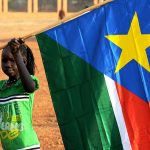Ah, the Dominion of Melchizedek – the name alone sounds like something straight out of a conspiracy theorist’s fever dream or a bad 90s action movie. And yet, this self-proclaimed “sovereign state” has managed to capture the imagination of the curious, the adventurous, and the downright bizarre for decades.
Nestled somewhere between delusion and reality, the Dominion of Melchizedek is a tale of mystery, scandal, and a bizarre attempt to claim land across the globe. So, buckle up, because we’re about to dive into the history, the scandals, and the current state of this “nation” that somehow still exists in the annals of geopolitical oddities.
Click the link to read about the Principality of Islandia.
A Heavenly Birth: The Origins of the Dominion of Melchizedek
Let’s start at the beginning – which, for the Dominion of Melchizedek, is as nebulous as its actual existence. The Dominion of Melchizedek (often abbreviated as DoM) was supposedly founded in 1990 by a man named Frank O’Collins, an Australian who claimed to have been appointed by God to establish a sovereign state. The name “Melchizedek” is derived from a biblical figure, a mysterious priest-king from the Old Testament who, according to some interpretations, represents divine authority and mysticism. So, naturally, this was the perfect name for a nation that exists largely in the minds of its founders and a few eccentric followers.
The Dominion’s founders, who claimed it had the authority of a sovereign nation, set out to establish a “government” in exile and even started issuing passports, currency, and, of course, establishing a “royal” lineage. What better way to start a country than by selling official documents to anyone willing to buy them? And who wouldn’t want to be a citizen of a country that doesn’t seem to exist?

Claiming Land: The Land That Wasn’t There
If you’re wondering how a country without any real territory can exist, the Dominion of Melchizedek has you covered. In the early days, it didn’t let a little thing like land ownership get in the way of its grand ambitions. The DoM made several attempts to claim land across the world, and by “claim,” we mean either buying or simply declaring sovereignty over regions that didn’t belong to them. It’s the geopolitical equivalent of saying, “I call dibs!” on a piece of property that isn’t yours.
One of the most famous land claims made by the Dominion of Melchizedek was for a stretch of land in the Pacific Ocean, specifically the area around the island of Minerva Reef. The reef, located between Fiji and Tonga, was claimed by the Dominion in 1993. The claim was made by a group of individuals associated with the Dominion, who took the unusual step of declaring the reef as part of their “sovereign territory.” This was, of course, not recognized by any legitimate government, but that didn’t stop the DoM from issuing documents to anyone who wanted to buy into their “land.”
In another eyebrow-raising move, the Dominion also declared itself the owner of a large chunk of land in the United States, the so-called “Melchizedek Kingdom.” The land was supposedly located in the desert, but it never really materialized as a true territorial possession. Nevertheless, the Dominion of Melchizedek continued to claim various pieces of real estate around the world, with the same lack of recognition and legitimacy.
The Scandals: Fraud, Money Laundering, and More
Where there’s smoke, there’s fire, and in the case of the Dominion of Melchizedek, there’s plenty of both. The so-called “nation” has been embroiled in a series of scandals over the years, mostly revolving around its dubious financial activities. In the 1990s and early 2000s, the Dominion gained a reputation as a haven for shady financial dealings, including money laundering, fraudulent banking operations, and other illicit activities.
Perhaps the most infamous scandal involved the establishment of the Dominion of Melchizedek’s “banking system.” In the early 2000s, the Dominion set up a number of shell companies and financial institutions that were linked to fraudulent activities. The most notable of these was the “Melchizedek Bank,” which operated under the guise of a legitimate financial institution but was later found to be involved in a large-scale money laundering scheme. The bank issued fraudulent documents, including fake passports and bank accounts, to individuals and entities engaged in illicit financial activities.
The scandal attracted the attention of international law enforcement agencies, including the FBI and Interpol, who began investigating the Dominion’s operations. The fallout from these investigations led to the dissolution of several of the Dominion’s so-called financial institutions, but not before they had made millions from unsuspecting individuals who thought they were buying into a legitimate nation-state.
In addition to the banking scandal, the Dominion of Melchizedek has also been linked to other criminal activities, including fraudulent real estate deals and the sale of fake citizenships. For a country that claims to be a beacon of sovereignty, it certainly has a shady past.
Can You Visit the Dominion of Melchizedek?
Now, here’s the fun part – can you visit the Dominion of Melchizedek? Well, if you’re thinking about booking a flight to its non-existent capital, you’re out of luck. Despite its claims of sovereignty, the Dominion of Melchizedek doesn’t have a physical territory that you can actually visit. In fact, the closest you’ll get to “visiting” the Dominion is by buying one of their highly questionable passports or citizenships, which, let’s be honest, are more of a novelty than anything else.
If you’re an adventurous traveler looking for a bizarre experience, you might be able to find a “representative” of the Dominion of Melchizedek somewhere in the world. These representatives have occasionally popped up at conferences, in obscure corners of the internet, or in financial dealings that could best be described as “questionable.” But as for setting foot on land that is officially part of the Dominion, that’s highly unlikely. The so-called “land” it claims is often either non-existent or in dispute, and no country in the world officially recognizes the Dominion as a legitimate state.
Current Status: A Laughable Footnote in Geopolitics
So, where does the Dominion of Melchizedek stand today? Well, it’s still around, in a sense. The “nation” continues to exist in the form of a few die-hard followers and a website that sells its dubious services. But in the world of international politics, the Dominion of Melchizedek is about as relevant as a forgotten MySpace page. No government recognizes it, and its land claims are laughable at best.
The Dominion has, however, managed to keep itself in the news over the years, mostly thanks to its ongoing legal troubles and financial scandals. It remains a footnote in the annals of “sovereign citizen” movements and a reminder that, in the world of geopolitics, anything can happen – even the creation of a country that exists solely on paper.
Conclusion: The Dominion of Melchizedek – A Curious Footnote in History
The Dominion of Melchizedek is a fascinating case study in the world of fake nations and self-proclaimed sovereign states. From its bizarre land claims to its shady financial dealings, it’s a “country” that should be taken with a heavy dose of skepticism – and maybe a little laughter. While it may never become a recognized state, the Dominion of Melchizedek continues to exist as a symbol of the strange and often absurd world of pseudo-nationalism.
So, if you’re looking for a truly bizarre adventure, perhaps you could try your luck and see if you can get your hands on a Melchizedek passport. Just don’t expect to get past immigration – anywhere.
While we cannot take you to the Dominion (yet), but we can take you to the Least Visited Countries.





